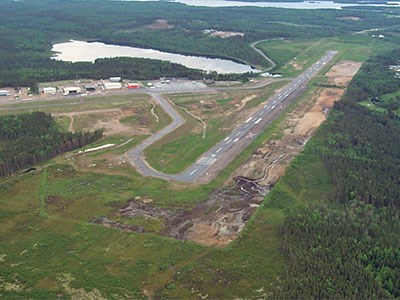Finding ways to carve the costs of air freighting fresh food to remote First Nation communities is the focus of a feasibility study underway between three northwestern Ontario communities.
Cashed up with $194,500 in funding, the study will investigate the establishment of a regional distribution centre in Sioux Lookout to serve as a clearing house to send nutritious foods and consumer goods to as many as 31 remote, fly-in communities.
Planned as a not-for-profit social enterprise, the Municipality of Sioux Lookout and the First Nation communities of Lac Seul and Kitchenuhmaykoosib Inninuwug (K.I.) are spearheading the initiative. Also involved is the Federation of Canadian Municipalities and the Council for the Advancement of Native Development Officers.
The study will examine potential business and revenue models, the scale of a facility, the financial analysis, evaluate at the risks and the project impacts. It should be complete by year’s end.
The first major meeting of all the parties involved was scheduled to take place April 30-May 1 when more than 80 chiefs and their economic development staff were to meet in Lac Seul to discuss their vision for the distribution network.
Sioux Lookout economic development manager Vicki Blanchard said a big question to be answered is, what goods can the communities’ produce to generate some backhaul freight and create a “reverse economy?”
Blanchard said future exports from the Far North could be fish, water and handmade items like moccasins and mitts.
The original concept is for the Sioux Lookout Airport to serve as the distribution point, but the study will identify the best location for a facility.
Still to be determined is whether some food be sourced regionally, rather than shipping it in from terminals outside the region.
“We haven’t gotten that far yet,” said Blanchard, “but Sysco – one of the world’s largest restaurant food providers – is watching this carefully,” said Blanchard, who toured one of their distribution facilities in Winnipeg.
Blanchard contends the existing supply chain to service these isolated communities through Pickle Lake isn’t working. The necessary infrastructure isn’t in place, there’s little to room to expand at the Pickle Lake airport, and the coordination of freight shipments isn’t there.
“The problem with Pickle (Lake) is the food is perishing because there’s no one there to look after it,” said Blanchard. “One community, Kasabonika, had an order sitting there for two weeks. Sysco has a zero-perish guarantee, when food perishes they have to replace it.
The Sioux Lookout airport has hangar space available, she said, and a land-use plan with the necessary infrastructure in place to expand.
“It’ll be determined if we refurbish (a hangar) or build new. We have the land. Everything’s there ready to go.”
The scale of the facility will be determined by what partners come on board.
Blanchard said air carriers such as Wasaya, CreeWest, Northern Skies Air Service have expressed some level of interest in being involved.
Part of this project is a partnership with the Meno-Ya-Win Health Centre along with local Friendship Centre to consider greenhouses as an education tool for their long-term care patients. Blanchard suggested there could be some shared knowledge for folks to take back to their home communities.
“First Nations have to build their own capacity if they’re tired of the ‘colonial’ setup. Some want to do it on their own, and it’s getting to the point where they see it as an opportunity.”
Blanchard doesn’t expect any opposition on this initiative from retail stores who may have their own chain of preferred suppliers.
“No, they can be a partner in this. There still needs to be someone looking after it at the end.”




